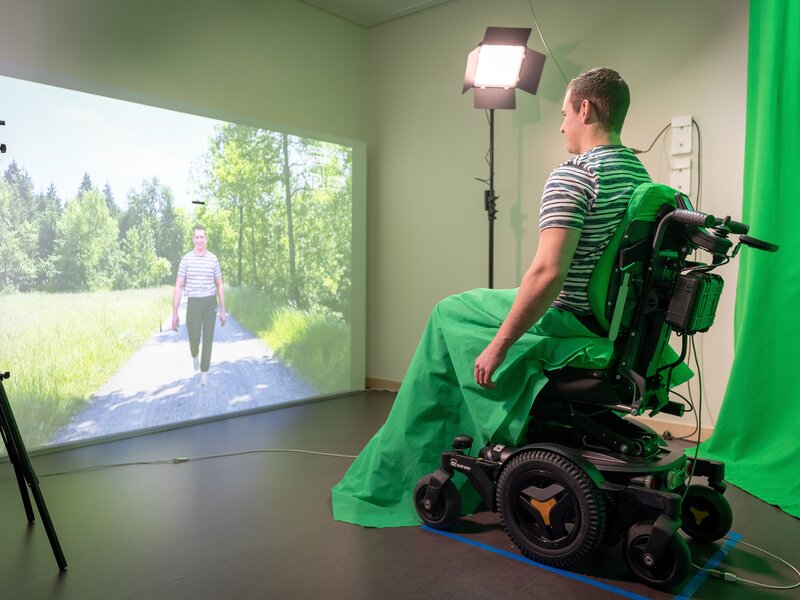Virtual Walking helps to ease phantom pains
Lucerne/Nottwil LU – The Centre for Pain Medicine and Lucerne University of Applied Sciences and Arts have together developed a globally unique installation to help paraplegics manage phantom pains. The aim is for Virtual Walking to ease the burden on an overworked brain.
Researchers from the Lucerne University of Applied Sciences and Arts (HSLU) in addition to the Centre for Pain Medicine Nottwil and Orthotec AG, also located in Nottwil in the canton of Lucerne, have created an installation for people suffering from paraplegic disorders and phantom pains. According to a press release issued by HSLU, 75 percent of paralysis victims often suffer from unbearable pains that afflict body parts in which, due to their condition, they otherwise have no feeling. The installation is designed to help these people.
When the legs are visible but no longer react to stimuli, information from the nervous system is contradictory, explains Dr. André Ljutow, Head of the Centre for Pain Medicine Nottwil, in the press release. “The brain is unable to resolve this conflict so quickly and reacts like a crashed computer with an error message: The alarm is expressed as pain”, he comments. The new therapy approach, known as Virtual Walking, is designed to give the brain more time to get used to the body’s new limits and therefore alleviate the pain.
A “complicated and globally unique installation” enables patients to see themselves walking. In this installation, an affected person sits in a converted electric wheelchair that simulates a walking movement for the pelvis. In front of the patient is a projection screen with a camera in the middle, which records the upper body. Behind the user is a green screen, while their legs are also covered in green. A specially developed software is able to combine the camera recording of the paraplegic person with a pre-produced video of two healthy legs walking through a forest scene.
According to HSLU, the development work on this project lasted four years. First patients have already tested the therapy system – “with positive results”. Now, the Centre for Pain Medicine will focus on treatment techniques for similar clinical pictures such as strokes or neuritis.
Hochschule Luzern Architektur & Technik


